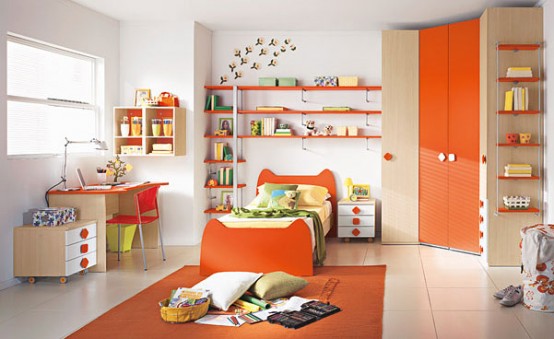
Learning space that looks interesting, attractive according to the child, not by you as a parent, can provide inspiration and motivation to the child. If a comfortable study space, the child will be more eager to learn.
Creating a comfortable learning space is not easy. Therefore, designing a learning space is very different to arrange workspace adults. To create a comfortable learning space, many things must be considered, such as the space, materials, selection of furnishings or furniture, up to color selection.
Ideally, learning spaces where children can be fun and add creativity. To create a fun learning space, the space needed should not be large. Most importantly, the room was able to meet all children's learning needs. It would be nice, if you provide a roomy tables, and decorated with a variety of expressive images.
Although there is no fixed rule for the study area, ideally children's learning space measuring 2.5 x 2.5 meters/child. If in one house there are some children, especially little ones, then the space required is usually broader. Therefore, the ideal learning space needed a place to explore creativity. For an older child or an adult, usually requires a large room that is ideal for putting a table and chairs and a storage shelf goods.
In addition to the size of the study room, things you need to consider is the safety and comfort. For younger children, you should avoid the use of furniture that has a hand or taper or sharp corners. Also avoid furniture that can scratch and harm the child's motion. Because children generally tend to be active when it is inside a room. Moreover, learning activities are usually interspersed with motor activity, like running.
You also need to consider the color of the walls, not to appear impression of monotony in the learning space, because it can make a child feel tired and sleepy when invited to learn. It would be better if you decorate the learning space wall using wallpaper, wall stickers, or just regular paint. Generally more expensive wallpaper, but it presents more interesting motives.
If you select a wallpaper, select wallpaper with a pattern corresponding to the character of children and made of materials that are not easily soiled, eg vinyl. If you want a wall color, can use wall stickers.

Separate learning space or merge with another room?
Perhaps you are wondering, which one is better, whether combining learning space in the bedroom, or learning space separated the bedroom? The answer depends on the availability of space in your home. However, should a separate study room from another room. That way, children can focus on learning activities. If a separate study room, choose bright colors and strong because it can stimulate the creativity of children. For example red, orange, blue, and green. Bright colors can be applied as an accent wall.
Only, if a little room in your house, then the learning space can be incorporated with a bedroom or other rooms, which take into account is set up room so that the room has a clear zone as a break room and learning. To distinguish it, can be characterized by a shelf of books. If indeed the study together with a bedroom, you should use pastel colors, especially for the wall facing the bed.




Photos: kecuk.com
Post Title
→Tips for designing children's learning space
Post URL
→http://arebelfansblog.blogspot.com/2011/11/tips-for-designing-children-learning.html
Visit arebelfansblog for Daily Updated Wedding Dresses Collection

No comments:
Post a Comment